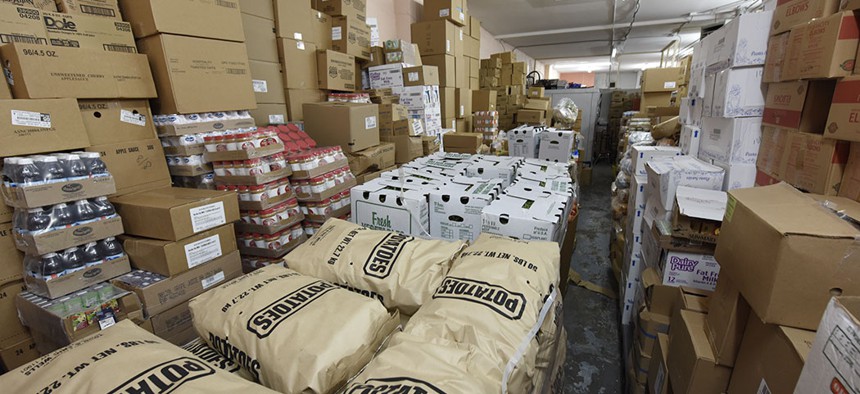The Trump administration approved a new rule on Wednesday that would push 688,000 people out of the federal food-stamp program nationwide and threaten the access of at least 107,000 New Yorkers, according to Hunger Solutions New York, while food banks and soup kitchens are already struggling to meet growing demand.
About 70,000 recipients in New York City could lose Supplemental Nutrition Assistance Program benefits under this plan. The United States Department of Agriculture initially estimated that 750,000 people across the country would lose access to the benefits.
The rule restricts the ability of states to expand access to food stamps to able-bodied adults without children. Normally, these individuals can only receive three months of benefits in three years unless they work, volunteer or participate in job training for at least 80 hours a month. The waivers allow states to bypass the work requirement if an area’s unemployment rate is 20% higher than the national rate. But the new rule limits their usage to areas with a 6% unemployment rate or higher, while the national employment rate in October was 3.6%. Three counties in New York City and 34 counties in the rest of the state have approved waivers, 89% of which would be revoked, according to Hunger Solutions New York.
Compared with other parts of the country, New York does have the advantage of having more robust workforce training programs to allow people to fulfill the requirement, said Emilio Tavarez, director of policy, research and advocacy at Hunger Free America, although caseload limits restrict the reach of organizations.
“It’s just adding to a lot of bureaucracy that doesn’t lead to a decrease in food insecurity or increase in the economy,” he told City & State.
Cuts in the SNAP program also lead to cuts in the revenue to small businesses, Nicholas Freudenberg, director of the City University of New York Urban Food Policy Institute, told City & State, referring to the 18,000 stores and retailers in New York that accept SNAP benefits. New York City estimates more than $150 million in lost business annually as a result of the rule.
This was one of three proposals targeting SNAP that the Trump administration announced this year, which would impact many of the nearly 3 million recipients in New York. The cumulative effect of the proposals – which also end states’ ability to increase eligibility and cap deductions for utility allowances – would result in 3.7 million people losing access, according to one recent study by the Urban Institute.
Food pantries and soup kitchens in New York City have noted increased visits from families with children, immigrant families and first-time visitors this year, according to a new report from Food Bank for New York City. Consistent with the previous year, just over half of the organizations surveyed saw food shortages as well.
“Charity is not able to bridge the gap made by this policy,” President and CEO of Food Bank for New York City Margarette Purvis told City & State in reference to the rule.
City Harvest, the largest food rescue organization in New York City, is currently looking at strategies to tackle where people will be the most impacted.
“We don’t even really have the actual language for (the rule),” Jerome Nathaniel, associate director for policy and government relations at City Harvest, told City & State. “We’re still sort of in the planning phase, and we’re really following the lead of Feeding America, which is the national network of food banks, to see what advocacy opportunities are available.”
Correction: This post originally had the incorrect title for Jerome Nathaniel at City Harvest.


